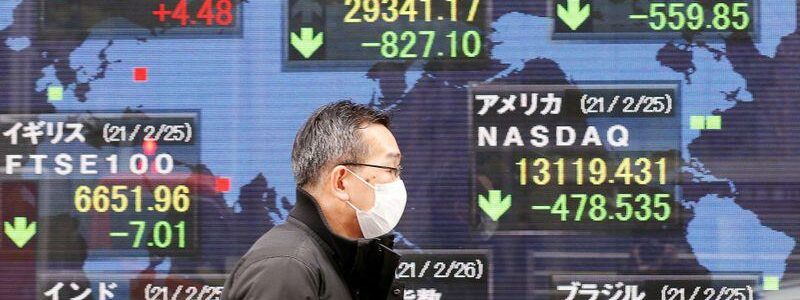
U.S. bond yields dip from 14-month highs, oil stabilises
LONDON (Reuters) – U.S. bond yields on Friday edged off the 14-month highs reached the day before as markets looked to a U.S. economic recovery, while oil stabilised after a 7% slide.
Bond markets have experienced sharp moves this week as the U.S. Federal Reserve said it expected higher economic growth and inflation in the United States this year, although it repeated its pledge to keep its target interest rate near zero.
Yields on U.S. 10-year notes, which move inversely to price and have been rising for the past seven weeks on growth expectations, spiked to their highest since January 2020 at 1.754% on Thursday. They were last at 1.6838%.
German long-dated government bond yields slipped in tandem with U.S. yields.
“Every man and his dog is looking at bond yields,” said Giles Coghlan, chief currency analyst at HYCM. “Even though (Fed chair Jerome) Powell was dovish, bond yields marched higher, purely on anticipation that the Fed is behind the curve – the market is pricing rate hikes in.”
MSCI world stocks fell 0.21% from one-month highs in the previous session, though Nasdaq futures rose 0.8% and S&P 500 futures gained 0.4%.
Oil and U.S. stocks were hit on Thursday by worries over faltering vaccine roll-outs and further slowdowns in Europe, after France imposed a one-month lockdown in Paris and parts of the north.
French stocks fell 0.5%. UK stocks fell 0.7% as energy stocks dropped.
After falling 7% on Thursday, Brent crude futures bounced 82 cents to $64.09 a barrel. U.S. crude rose 88 cents to $60.88. [O/R]
Oil’s retreat wiped out four weeks of gains in a single session amid worries world demand would fall short of high expectations.
The jump in Treasury yields has provided some support to the U.S. dollar.
“The majority of market participants considers the Fed’s cautious approach to be justified and assumes that this supports the economic recovery,” Commerzbank analysts said in a note.
“That improves the longer-term economic outlook and therefore justifies higher interest rates long-term as well as a stronger dollar.”
The dollar was little changed on Friday, however, easing 0.1% to 91.735 against a basket of currencies and holding steady against the euro at $1.1922. It dipped 0.2% on the low-yielding yen at 108.63.
Markets were also unsettled by the Bank of Japan’s (BOJ) decision to slightly widen the target band for 10-year yields and tweak its buying of assets.
The bank portrayed the changes as a “nimble” way to make easing more sustainable, though investors seemed to take it as a step back from all-out stimulus. A decision to confine purchases to only TOPIX-linked ETFs knocked the Nikkei down 1.6%.
South Korea lost 1%. Chinese blue chips shed 1.9%, perhaps unnerved by a fiery exchange between Chinese and U.S. diplomats at the first in-person talks of the Biden era.
The rise in bond yields has weighed on gold, which offers no fixed return, and left it down 0.4% at $1,743 an ounce.
Source: Read Full Article